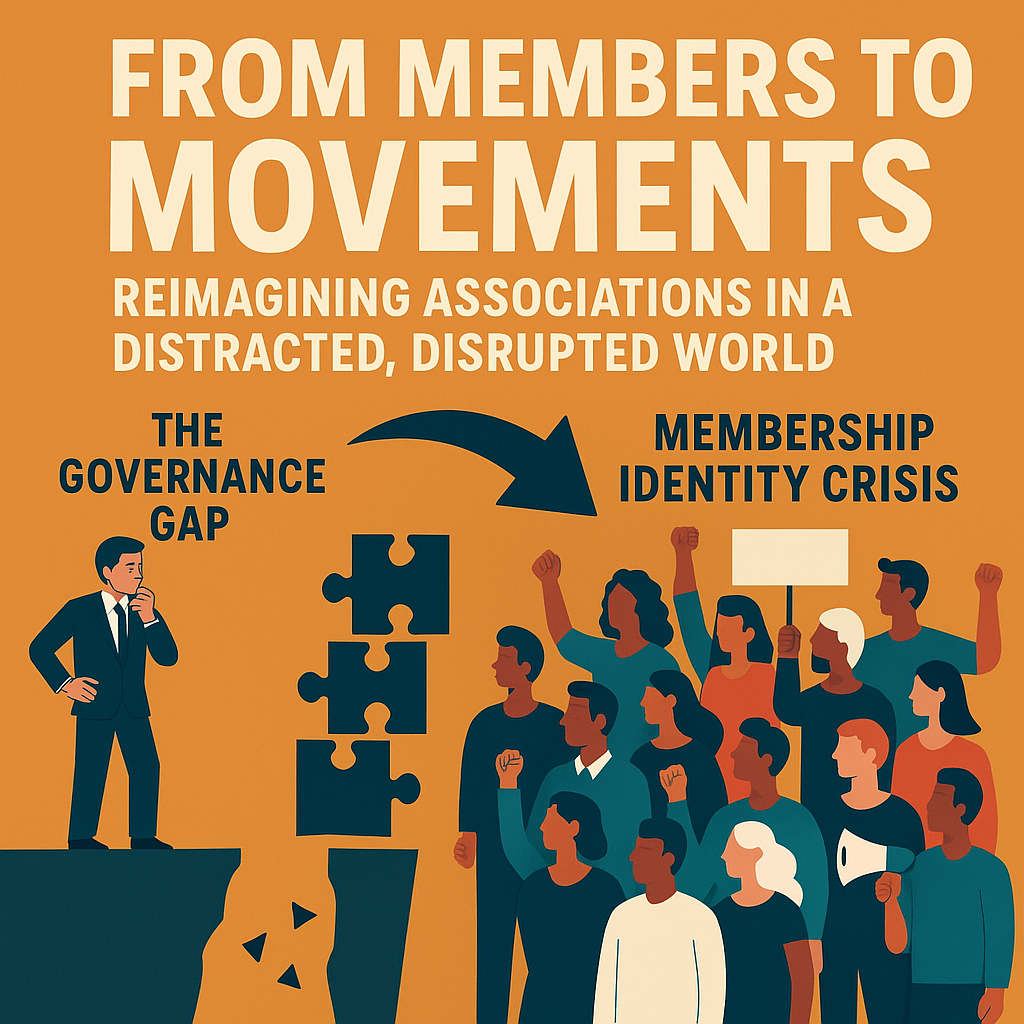
Word Count 615 – 4 Minute Read
Association leaders today are caught in a pincer movement of pressure. Internally, dysfunctional governance is slowing progress. Externally, the traditional membership modeling, the bedrock of association life for over a century—is being called into question. Together, these forces demand a reimagining of both how associations work and who they serve.
The Governance Gap
According to recent insights from GrowthZONE, one of the most pressing issues association executives face isn’t budget shortfalls or member attrition—it’s board dynamics. Specifically:
- Board members pursue personal agendas instead of the collective good.
- Disregard for the strategic plan or budget.
- Poor communication, indecision, or slow responses.
Progress halts when the board behaves like an obstacle course rather than a strategic ally. The executive is left in a holding pattern, unable to execute bold ideas or respond quickly to shifting landscapes.
What’s the solution?
Associations must elevate governance from gatekeeping to guardianship and stewardship of the mission. That means:
- Creating governance agreements that clarify board responsibilities, including the expectation that members champion—not circumvent—the strategic plan.
- Conducting annual self-assessments to surface misalignment or underperformance.
- Implementing ongoing board development that positions fiduciary duty as a future-facing, mission-driven commitment rather than a platform for personal influence and embarrassing foresight.
The Membership Identity Crisis
Externally, Fast Company paints an equally sobering picture: the traditional membership concept is fading. The world’s largest “association” is arguably Facebook—with billions of members and no dues. Anyone can start a community. Anyone can learn anything. People no longer pay for the privilege of belonging; they pay—or participate—for tangible value.
Associations can no longer assume loyalty. They must earn relevance.
So, what’s replacing membership?
Fast Company offers a compelling candidate: engaged action—a group’s collective, intentional behavior. This could be:
- Turning out at the polls.
- Attending a live event.
- Taking a class.
- Negotiating with policymakers.
- Tweeting en masse.
- Signing a pledge or donating to a cause.
Engaged action reframes the association not as a club for dues-payers but as a catalyst for impact. And suddenly, the potential community expands from dues-paying members to mission-aligned stakeholders.
What’s the solution?
- Rethink your audience. Your true base may include nonmembers who advocate for your mission, amplify your message, or contribute in other ways.
- Offer multiple engagement pathways—free to premium, occasional to immersive.
- Center value around participation and outcomes, not titles or tiers.
Bridging the Two: Leadership That Listens and Leaps
If membership is evolving into mission-driven engagement, and governance must evolve into a more strategic, aligned partnership, what binds it together?
Leadership.
Association executives must navigate the tensions between legacy structures and future opportunities. This requires both courage and cooperation. You can’t fix the member model if the board resists change. And you can’t inspire engagement if the executive team lacks the runway to experiment, respond, and adapt.
Three things association leaders can do now:
- Create a “Mission Outcomes Dashboard.”
Track and share impact metrics like advocacy wins, volunteer activity, stakeholder engagement, and learning participation. Help the board and staff focus on what matters. - Introduce an “Engaged Action Index.”
Go beyond membership counts. Measure who’s showing up, acting, sharing, and moving your mission forward—regardless of dues status. - Convene a cross-functional “Future Council.”
Involve board members, staff, younger professionals, and even nonmembers to test new models of participation and purpose.
Coda
The association model isn’t broken. It’s evolving. And the best way to serve our missions in this disrupted environment is to shift from “membership management” to “movement leadership.”
When governance becomes purpose-aligned, and members become engaged actors—not passive subscribers—your association becomes more than relevant.
It becomes a force.